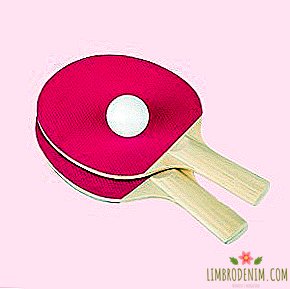What happens to stores in a crisis and how it will change our wardrobe
Consequences of the growing world economic crisis, we feel every day. We recently wrote that Topshop is in danger. Yesterday, December 8, the world representative office of the Netherlands company Mexx declared bankruptcy - the network did not cope with a decrease in consumer activity. However, Mexx stores will not close yet - companies need to sell the available goods and try to find a buyer for their assets.
We are continuing a series of materials about what the future of retail in Russia is. In this issue, we talked with Anna Lebsak-Kleimans - the general director of analytical and consulting agency in the Russian fashion industry Fashion Consulting Group, existing since 2000. We asked her about who is in danger today, who will stay afloat, what will be the assortment of stores and why soon everyone will switch to multifunctional things.
About the global division of labor and types of retail

The fashion industry is a multistage system from fabric manufacturers and designers to industries where things are sewn. At the end of this chain are buyers and retailers, whose tasks are to buy and sell the collection to the final consumer. However, over the past decades in the world, these competences are divided. On the one hand, a clear circle of European and American specialists was formed in the creation of an intellectual product: ideas, marketing, trademarks, collections. On the other hand, there are experts in the field of manufacturing and sewing technologies. The "sewing machine" industry is concentrated in Asia, where quality costs less money than in Europe itself.
The market can be divided into traditional and vertical retailers. Traditional retail businesses include department stores such as TSUM and Stockmann, concept stores, multi-brand stores. The essence of their competence - sales service. They buy the finished product in bulk and sell it retail with a surcharge of two or three times to cover the rental costs of retail and warehouse space, working capital (purchase of the next collection), staff salaries, advertising, and so on. After closing all expenses, the retailer has a net profit, which at best is 10-15%. Today, investment in the store pays off on average for five to seven years.
In the 80s and 90s a new type of retailer appeared - vertical. He grew out of the traditional. These are companies such as Inditex and H & M. They do not buy collections from other brands - they produce them themselves and sell them themselves. The vertical retailer knows how much it takes to produce goods to fill its sales area. The task of such a company is to respond flexibly to demand and open a store in places where its public gathers. This may be a store on the street in the city or a lot in the mall. Usually, mass-market companies do not create an author’s design, but find reference brands and recycle their bestsellers. Some of them, like Uniqlo, even produce their own fabric, bypassing the middlemen and all the stages mentioned at the beginning. Thus, a successful vertical retailer is able to raise profit levels by up to 25%.
On the situation in the Russian market and the past

Today, the net profit of companies (the same marginality) is 10-15% for horizontal retailers and 20-30% for vertical ones.
8-10 years ago, the rates of return were completely different, since the market was low competitive and in a stage of rapid development. Companies with new products just appeared, opened the first shopping centers, stores with a European mass market. World premium and mass brands made their first steps in Russia, "tested" the new market with the help of Russian representatives-partners. It was the best and very generous time for Russian distribution companies. At the same time, the most active Russian retail companies of that period, such as Sela, OGGI, Savage, Baon, quickly gained new stores, skimming off this not yet saturated market. Shops fought back after a year of work. But it was a non-normative market, and one cannot focus on it in assessing the current situation. Until 2006, the market growth was 15-20% per year, and now it is 4-5%. It is also impossible to compare the situation with the crisis of 1998. In 1998, the banking system collapsed, and people did not have savings, there was no middle class. The nature of the crisis was different.
Times have changed. There has been a relative market saturation. A rational and demanding consumer came to the place of a hungry and emotional customer. Today, the market situation is quite complicated. Due to the weakening of the ruble and the drop in demand, the profit of companies this season is close to zero. In connection with the collapse of the national currency retail business is at a loss. In most companies, the goods were brought from abroad, where the collections were purchased in dollars or euros. And today it’s time to pay for the new spring collection, which is supposed to go to stores in February. For this you need to convert your proceeds from the ruble into currency again. And during the autumn season, the turnover of stores fell by 20-30%, while the value of the currency rose by 40%. What to do? Raising the price - it means completely lose, and so "hushed" buyers. To lower the price is to completely "bleed out" the business. Simple arithmetic: here was your purchase, for example, for 100 thousand dollars. You spent 3.4 million rubles on it in the spring, and now you need 5.4 million rubles for the same amount of goods, despite the fact that all your expenses have remained, and the turnover has dropped by 20%. Thus, 10-20%, which were profitable, with the fall in demand for many, turned to zero with a minus. In this situation, the stores at best remain in idle mode "to zero". Do not forget that the markup factor even 3.5 times with all the discounts and sales turns into 1.8-2.2.
About emerging from the crisis and new prices

Lack of working capital pushes the network to reduce the purchase and close part of the stores. But you need to remember: buy less, sell less, - a vicious circle. If the spring season will be the same as this autumn, many companies will not have enough money to maintain the same scale and quality of the business, elementary to pay salaries, rent and other necessary expenses.
In any case, now everyone has to reduce costs: reduce the amount of advertising, reduce staff. Many brands are beginning to save on quality: to choose a cheaper fabric, to simplify the design, to abandon details and treatments. The first thing that retailers are doing right now is putting pressure on landlords to get discounts on renting, deferring payments, fix prices in rubles, re-sign rental agreements for a percentage of sales. Landlords are forced to give way, so do not want to stay with empty rooms. Here and the new law on fees for retail space, which comes into force on January 1, 2015, has ripened completely out of place
Many companies are actively beginning to look for "airbags", for example, investors who are now ready to buy a share in the business at "dumping" prices are much cheaper than before. Another “airbag” option for large holdings is to support a weakened “fashion company” with funds from a business in another sphere, for example, in real estate. It is important to continue working, even to zero, in order to survive the recession and not collapse. Those who survive will become leaders in the next stage of recovery.
New indexed stamp collections will be coming from January 20th. Prices will be appointed closer to this date. Now we are talking about an increase of 20-30%. If the course takes off again, there will be a collapse. Companies and stores will be massively closed. Luxury and cheap rags are what we are most likely waiting for.
About risk areas

From the point of view of business organization, a high-risk group is companies-distributors, representatives and buyers of European and American brands: department stores like TSUM and Tsvetnoy, multi-brands and concept stores. They buy collections from suppliers of the euro-dollar zone, invest their funds in them and are directly dependent on the course. And such connections are already beginning to crack in both the mass and premium segments. The Maratex distributor has closed and River Island is entering the market on their own. Gucci in 2014-2015 opens stores directly, without Mercury.
The average level of risk is for Russian companies and brands like Sela, InCity, Kira Plastinina, Savage, Baon, Modis, which are created for sales in Russia and depend on the Russian consumer, its tastes and consumer activity. The income of these companies is in rubles, but the expenditure is mainly in currency, since their business is tied to the import of finished goods from abroad, mainly Asia. An intergovernmental agreement on trade in yuan has already been adopted, but as a result, the market reacted specifically to this agreement - only the yuan grew, and the ruble remained in the same place where it fell. Nevertheless, the situation of these companies is better. These networks are vertical retailers with their points of sale. They can make decisions quickly and flexibly, for example, to close less profitable stores, to reduce the cost of collections: to produce more basic things, to reduce consumption of parts, to choose fabrics and accessories cheaper.
In the safest position are large foreign brands, for which Russia is only a small share in their global turnover. For example, for the Inditex group (Zara, Bershka, etc.) it is less than 5%, for H & M and Uniqlo it is less than 1%. They may well allow themselves some time to work at zero due to stable turnovers in other, more profitable regions. Moreover, the outflow of competitors will allow them to occupy a larger market share and expand on more favorable terms. These companies will also receive their bonuses from widespread rent reductions.
If we talk about price segments, then the hardest hit will be on the middle and especially the "middle plus" segments - on brands such as VASSA & Co, Sarah Pacini, Luisa Cerano, Karen Millen, Benetton. Their buyer will save and go either to the mass market or, on the contrary, will begin to “wisely” invest in purchases: to buy things less often, but more expensive. In relative security, again, the boundaries of the market - luxury and mass market. The main consumers of the top-suite may be buying less - but of yachts, not bags. This is confirmed by the fact that during the 2008 global crisis, sales of Hermès and Louis Vuitton only increased.
That we will wear in times of crisis

Always in a period of economic recession, the trend of unification is emerging, that is, clothing acquires less trim and details. The main becomes its multifunctionality and low cost of production. Dress, for example, should be such that it could go to work, and to the cinema, and to the store. Accordingly, functionalism and pragmatism begin to dominate in the fashion. I want to note that one should not confuse and equate minimalism and functionalism. Minimalism - verified and elite style: graphic cut, monochrome, expensive fabrics, flawless seams. Functionalism, on the contrary, is a striving for practicality, when everything that is unnecessary is swept aside: extra seams and details. Beautiful is what is useful.
It is also worth remembering that now there are changes in values. Priorities are the values of health, balance, traditional and stable family relationships, the cult of childhood, a return to simplicity and naturalness. For example, the fashion for sports is connected not only with the multifunctionality of sports things, but also with the trend for new wellness. New wellness implies that well-being is measured not by the number of diamonds, but by investment in health and natural beauty. This is the value of prolonging youth through a healthy lifestyle, and not through investment in plastic surgery. Sports and fit appearance becomes the rule of good tone for a wealthy person at any age.
Thus, even people who are far from sport want to look involved in it, and such attributes of sporting life, like sneakers and leggings, are included in everyday life. Functionality and a course on sportiness are two of the most important trends now that it makes sense to focus on Russian fashion brands.
Photo:TSUM Department Store Moscow / Facebook, KUZNETSKY MOST 20 / Facebook




